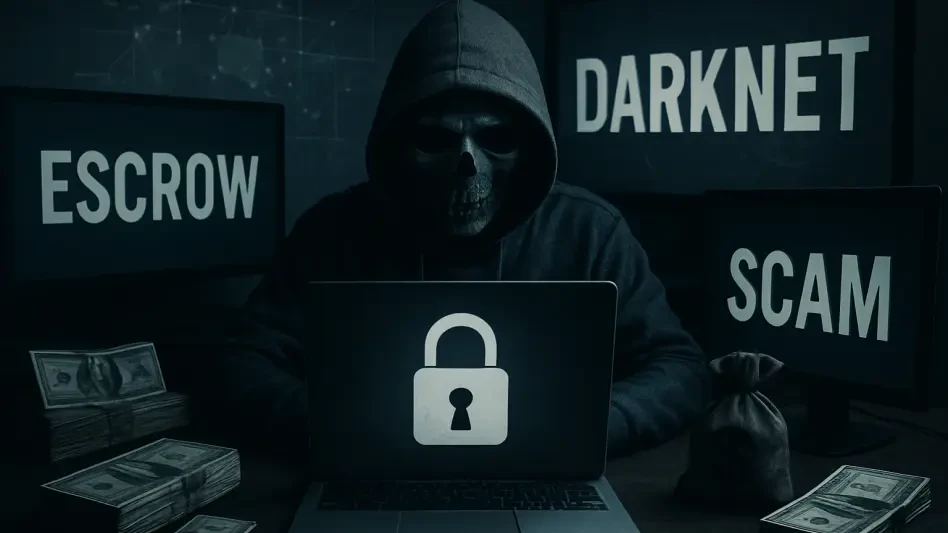In the shadowy corners of the internet, darknet markets operate as illicit hubs for transactions involving everything from contraband to digital goods, relying heavily on escrow systems to secure cryptocurrency payments between anonymous buyers and vendors. These platforms, hidden from conventional oversight, promise a semblance of safety through mechanisms designed to hold funds until deals are complete, yet they harbor critical vulnerabilities that leave users exposed to devastating losses. Despite technological advancements aimed at bolstering security, the specter of administrator misconduct and systemic flaws looms large, undermining trust in these underground marketplaces. Stories of sudden market closures and vanished funds are not uncommon, painting a grim picture of an ecosystem where betrayal can be just a click away. As these markets continue to evolve, the persistent risks tied to escrow systems demand closer scrutiny, revealing a complex interplay of innovation and exploitation that challenges the very foundation of digital anonymity.
Unpacking the Mechanics of Escrow Systems
Darknet markets depend on escrow systems to act as intermediaries, holding cryptocurrency in a neutral account until transactions between buyers and vendors are finalized. Typically, these systems utilize a multisignature (multisig) setup, often a 2-of-3 model involving the buyer, vendor, and market administrator. Funds are locked in a multisig address, requiring two signatures to release them—usually the buyer and vendor upon successful delivery. If disputes arise, the administrator steps in, using their key to allocate funds based on evidence like shipping confirmations. While this design prevents any single party from accessing funds unilaterally, unlike older centralized models where markets held funds directly, it still places significant trust in administrators to mediate fairly. The technical sophistication of multisig offers a layer of protection, but the human element of dispute resolution introduces risks that cannot be fully mitigated by code alone, leaving users vulnerable to potential bias or outright deceit in critical moments.
Beyond the multisig framework, many darknet platforms incorporate automated escrow release mechanisms to streamline operations and reduce manual oversight. These systems are programmed to transfer funds to vendors after a predetermined period, often ranging from 7 to 21 days, unless a buyer files a dispute within that window. Timers may vary based on shipping distances, with shorter periods for domestic orders and longer ones for international deliveries, while buyers can opt to release funds early if satisfied. For larger transactions, some markets employ graduated release systems, providing partial payments to balance vendor liquidity with buyer protection. However, this automation shifts the burden onto buyers to vigilantly monitor their orders and act swiftly if issues emerge. Late discoveries of problems or missed deadlines can result in automatic fund releases to vendors, even in cases of fraud or nondelivery, highlighting a critical flaw in efficiency-driven designs that prioritize speed over comprehensive user safeguards.
The Persistent Threat of Exit Scams
One of the most notorious risks in darknet markets is the exit scam, where administrators abruptly shut down the platform and disappear with all escrowed funds, leaving users with no recourse. These scams often occur during peak transaction periods, such as holiday seasons, when escrow volumes are at their highest, maximizing the potential haul for deceitful operators. Historical patterns show that such betrayals are a leading cause of market closures, exploiting the centralized nature of dispute resolution and administrative control. Even with multisig systems in place, the administrator’s role in disputes provides an avenue for manipulation or outright theft if they choose to collude or act maliciously. The anonymity that defines darknet platforms further compounds the issue, as there are no legal mechanisms to hold rogue administrators accountable, turning trust into a dangerous gamble for participants in these shadowy economies.
The impact of exit scams extends beyond immediate financial loss, eroding confidence in darknet markets as a whole and pushing users toward riskier alternatives. Many individuals, burned by past betrayals, opt for direct deals with trusted vendors outside escrow systems to minimize exposure, though this approach sacrifices the mediation benefits escrow provides. Others limit the amount of funds they commit to escrow at any given time, a cautious strategy that can hinder larger transactions. The pervasive fear of administrator misconduct reveals a fundamental tension: while escrow systems are designed to foster trust, their reliance on centralized figures undermines that very goal. This paradox fuels ongoing debates about the viability of current models, with users and observers alike questioning whether technological safeguards can ever fully counteract the human propensity for greed and opportunism in an environment devoid of accountability.
Balancing Security with Systemic Trust Issues
Efforts to enhance security in darknet escrow systems through multisig wallets and automated processes represent significant strides, yet they fail to address the core issue of trust in centralized administrators. The multisig model reduces the risk of unilateral fund access, and automation speeds up transactions, but neither eliminates the need for a neutral arbiter in disputes—a role often filled by administrators who may prioritize market profits over fairness. This inherent conflict of interest, coupled with the potential for corruption, means that even the most advanced technical solutions carry an asterisk of uncertainty. As markets grow in complexity, the balance between operational efficiency and robust security becomes increasingly difficult to strike, leaving users to navigate a landscape where every transaction is a calculated risk under the shadow of potential betrayal.
Looking ahead, the limitations of current escrow models underscore the urgent need for decentralized alternatives that could minimize reliance on human intermediaries. Innovations in blockchain technology and smart contracts hold promise for creating trustless systems where code, not people, enforces transaction rules, potentially reducing the opportunities for scams. However, implementing such solutions in the darknet’s opaque environment poses unique challenges, from user adoption to ensuring code integrity. Reflecting on past failures, it’s clear that the road to secure transactions has been paved with exploited vulnerabilities and misplaced trust. The focus must shift toward building frameworks that prioritize user empowerment and transparency, ensuring that the lessons from countless exit scams and systemic flaws guide the development of more resilient mechanisms for safeguarding funds in these high-stakes digital arenas.








